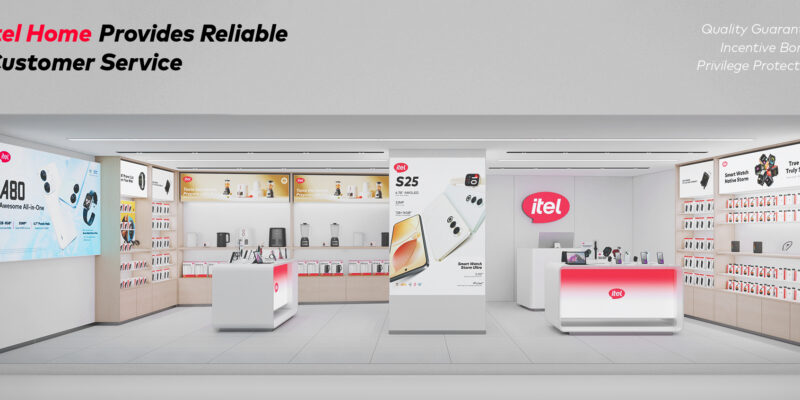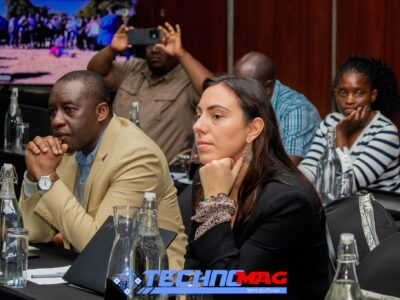In a global smartphone market dominated by premium brands and billion-dollar advertising campaigns, Itel Mobile’s story stands out as a tale of quiet but powerful inclusion. From its humble launch in Hong Kong in 2007, Itel has become one of the most recognizable handset names in Africa built not on luxury, but on affordability, access, and understanding of local realities.
Established in 2007 as part of Transsion Holdings, the same parent company behind Tecno and Infinix, Itel Mobile began with a mission to “provide budget-friendly mobile communication to everyone.” The company’s focus was clear from the start to serve first-time phone users in emerging markets who were priced out of mainstream smartphone offerings.
Less than two decades later, the brand has expanded to more than 45 countries across Africa, South Asia and Southeast Asia, positioning itself as a key global player in entry-level mobility solutions. According to IDC and Communications Africa reports, itel was among the top three mobile brands in Africa by sales volume in 2016, when it sold around 40–50 million handsets globally, maintaining the No. 1 position for feature-phone sales in Africa for the second consecutive year.
Itel’s rise in Africa is not an accident it’s a case study in market fit. Across the continent, millions of consumers needed reliable, affordable, and long-lasting phones that could perform well in regions with unstable power supply and limited connectivity.
Instead of competing head-to-head with Apple or Samsung on performance, Itel doubled down on battery life, dual-SIM support, sturdy build quality, and low-price smartphones exactly what African consumers demanded. The company priced most of its early smartphones under US $100, helping millions migrate from basic handsets to their first internet-enabled devices.
That approach resonated deeply. By 2016, Transsion’s combined brands Itel, Tecno and Infinix controlled over 40 percent of Africa’s mobile phone shipments, according to IDC. Itel alone captured 6 percent of the continent’s smartphone market that year, trailing only Samsung and Tecno.
Itel’s story is not only about selling cheap devices; it’s also about maintaining trust. The brand invested heavily in after-sales service centers, local partnerships, and customer support across Africa a crucial differentiator in a region where warranty services are often scarce.
In Zimbabwe, Zambia, Nigeria, Kenya and Ghana, Itel has become synonymous with “the people’s phone” a brand that listens and responds. Whether through affordable repairs, long-battery devices like the Itel P40 and the new Itel Super 26 or its emerging smart accessories and TVs, the company has evolved from a budget phone maker into a comprehensive consumer electronics brand under its “Enjoy Better Life” philosophy.
Itel’s presence has also spurred local economic participation. Its distribution network supports thousands of small retailers and informal vendors who depend on mobile phone sales for livelihoods. In many African towns, itel’s feature phones remain the first connection to digital payments, WhatsApp communication, and e-learning quietly driving digital inclusion at the grassroots level.
The company’s strong offline presence from open-air markets to mobile repair shops has helped democratize access to technology in ways few global brands have achieved.
Still, the success story is not without nuance. Some of the widely circulated claims such as selling 40 million handsets in 2016 or maintaining No. 1 status across Africa, include both feature and smartphone categories combined. Independent research from IDC and Counterpoint Research clarifies that while Itel did lead in feature-phone shipments, its smartphone market share was smaller, though growing steadily.
Africa’s mobile market has become increasingly competitive, with brands like Samsung, Xiaomi, and Oppo expanding into the budget segment. This means Itel must now innovate beyond price alone focusing on quality, camera performance, and localized software experiences.
For Zimbabwe and similar economies, Itel’s model offers practical lessons in inclusive innovation. Success in digital transformation doesn’t always come from high-end technology; it often grows from designing for everyday realities.
Itel’s localization strategy from regional language support to power-efficient designs demonstrates that understanding local context is as important as advanced technology. Its ability to keep devices affordable without cutting out key functionality shows how inclusive tech ecosystems can thrive even in price-sensitive markets
In recent years, Itel has expanded its ecosystem beyond handsets. Its “Smart Life” strategy now includes smart TVs, wireless earphones, home appliances, and AI-enabled devices. The company continues to invest in R&D centers in Shenzhen and Lagos, working to integrate affordable technology with consumer lifestyles.
By 2024, the brand announced it had reached over 200 million cumulative users globally, further proving that its grassroots approach has global resonance.
In a technology industry obsessed with innovation at the top, Itel Mobile is building progress from the bottom up. Its rise is a reminder that connectivity is not a privilege it’s a right.
For every young person in Harare, Lagos, or Nairobi who buys their first smartphone for under US $100, Itel represents more than a brand; it’s a gateway to digital opportunity.
As the world races toward 5G and AI-powered devices, Itel’s challenge will be to maintain this delicate balance innovating forward while keeping technology within reach of the people who need it most.
Because sometimes, the most powerful technology revolution is not about luxury, it’s about access.














Comments